Hyeong Seok Kim
Contrastive Language Prompting to Ease False Positives in Medical Anomaly Detection
Nov 12, 2024Abstract:A pre-trained visual-language model, contrastive language-image pre-training (CLIP), successfully accomplishes various downstream tasks with text prompts, such as finding images or localizing regions within the image. Despite CLIP's strong multi-modal data capabilities, it remains limited in specialized environments, such as medical applications. For this purpose, many CLIP variants-i.e., BioMedCLIP, and MedCLIP-SAMv2-have emerged, but false positives related to normal regions persist. Thus, we aim to present a simple yet important goal of reducing false positives in medical anomaly detection. We introduce a Contrastive LAnguage Prompting (CLAP) method that leverages both positive and negative text prompts. This straightforward approach identifies potential lesion regions by visual attention to the positive prompts in the given image. To reduce false positives, we attenuate attention on normal regions using negative prompts. Extensive experiments with the BMAD dataset, including six biomedical benchmarks, demonstrate that CLAP method enhances anomaly detection performance. Our future plans include developing an automated fine prompting method for more practical usage.
Feature Attenuation of Defective Representation Can Resolve Incomplete Masking on Anomaly Detection
Jul 05, 2024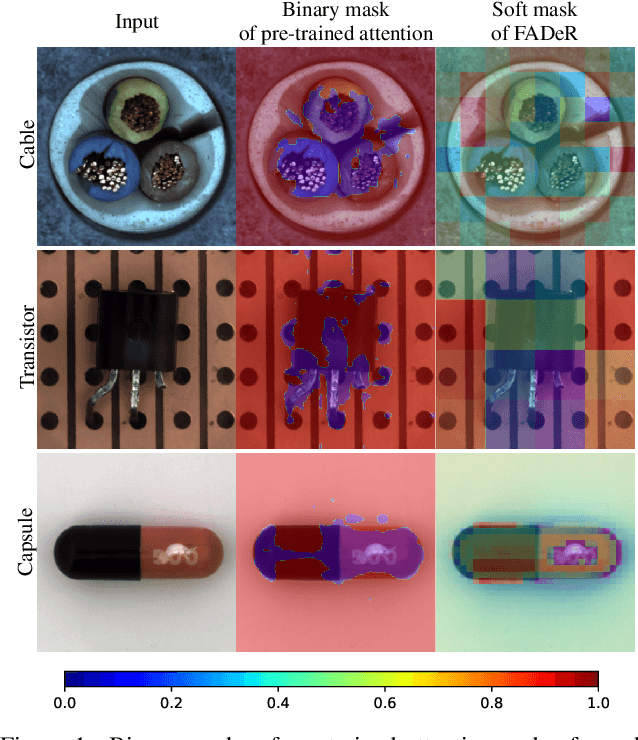
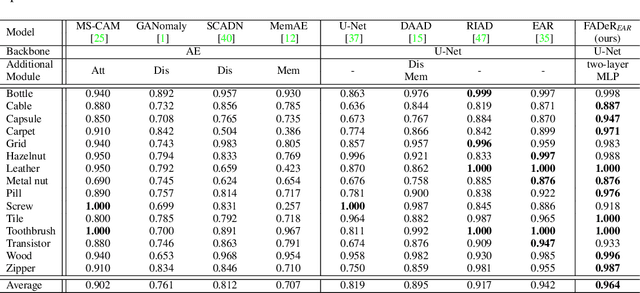
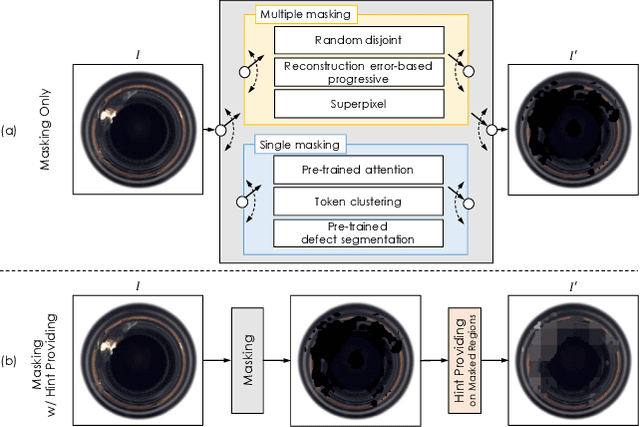

Abstract:In unsupervised anomaly detection (UAD) research, while state-of-the-art models have reached a saturation point with extensive studies on public benchmark datasets, they adopt large-scale tailor-made neural networks (NN) for detection performance or pursued unified models for various tasks. Towards edge computing, it is necessary to develop a computationally efficient and scalable solution that avoids large-scale complex NNs. Motivated by this, we aim to optimize the UAD performance with minimal changes to NN settings. Thus, we revisit the reconstruction-by-inpainting approach and rethink to improve it by analyzing strengths and weaknesses. The strength of the SOTA methods is a single deterministic masking approach that addresses the challenges of random multiple masking that is inference latency and output inconsistency. Nevertheless, the issue of failure to provide a mask to completely cover anomalous regions is a remaining weakness. To mitigate this issue, we propose Feature Attenuation of Defective Representation (FADeR) that only employs two MLP layers which attenuates feature information of anomaly reconstruction during decoding. By leveraging FADeR, features of unseen anomaly patterns are reconstructed into seen normal patterns, reducing false alarms. Experimental results demonstrate that FADeR achieves enhanced performance compared to similar-scale NNs. Furthermore, our approach exhibits scalability in performance enhancement when integrated with other single deterministic masking methods in a plug-and-play manner.
Neural Network Training Strategy to Enhance Anomaly Detection Performance: A Perspective on Reconstruction Loss Amplification
Aug 28, 2023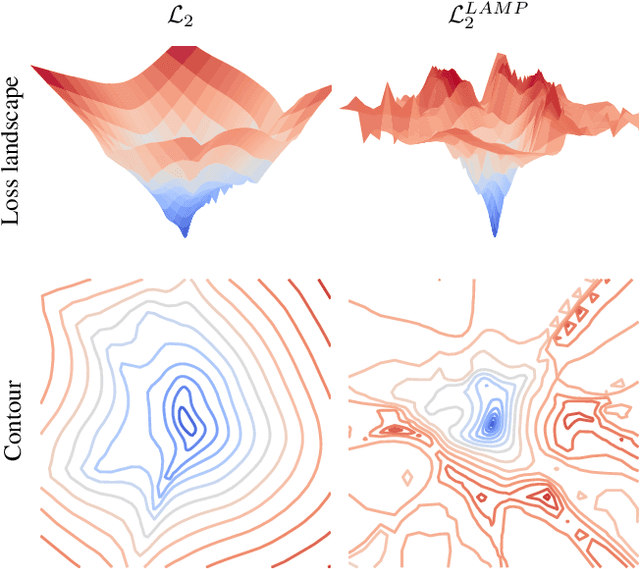

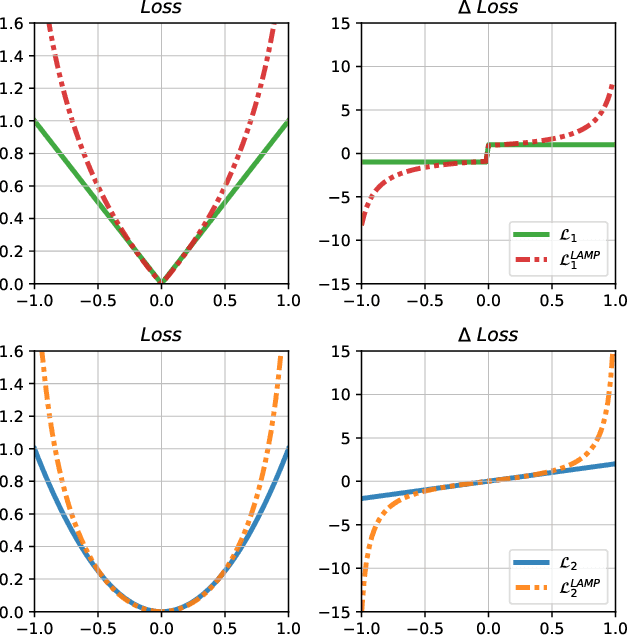
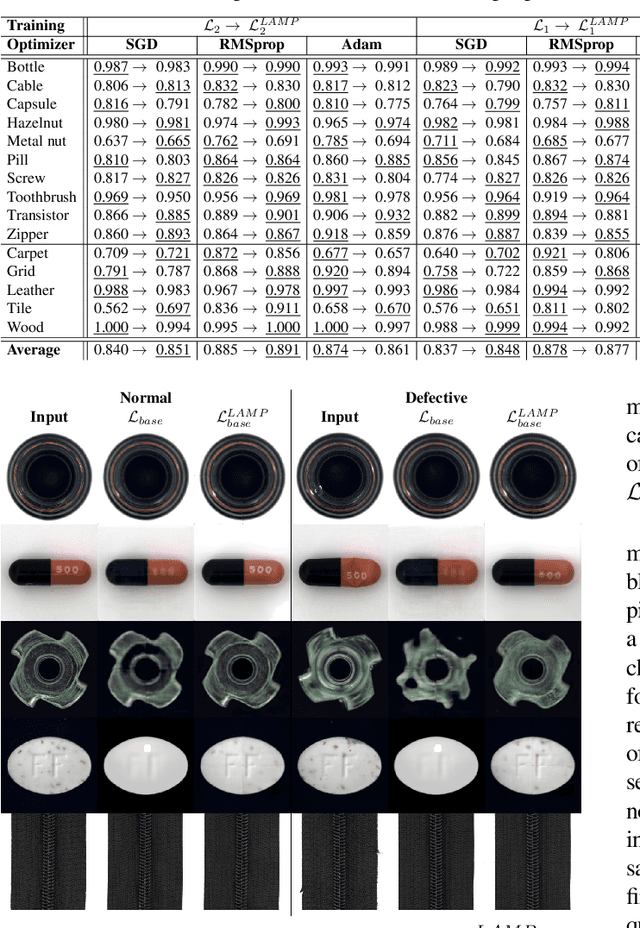
Abstract:Unsupervised anomaly detection (UAD) is a widely adopted approach in industry due to rare anomaly occurrences and data imbalance. A desirable characteristic of an UAD model is contained generalization ability which excels in the reconstruction of seen normal patterns but struggles with unseen anomalies. Recent studies have pursued to contain the generalization capability of their UAD models in reconstruction from different perspectives, such as design of neural network (NN) structure and training strategy. In contrast, we note that containing of generalization ability in reconstruction can also be obtained simply from steep-shaped loss landscape. Motivated by this, we propose a loss landscape sharpening method by amplifying the reconstruction loss, dubbed Loss AMPlification (LAMP). LAMP deforms the loss landscape into a steep shape so the reconstruction error on unseen anomalies becomes greater. Accordingly, the anomaly detection performance is improved without any change of the NN architecture. Our findings suggest that LAMP can be easily applied to any reconstruction error metrics in UAD settings where the reconstruction model is trained with anomaly-free samples only.
 Add to Chrome
Add to Chrome Add to Firefox
Add to Firefox Add to Edge
Add to Edge